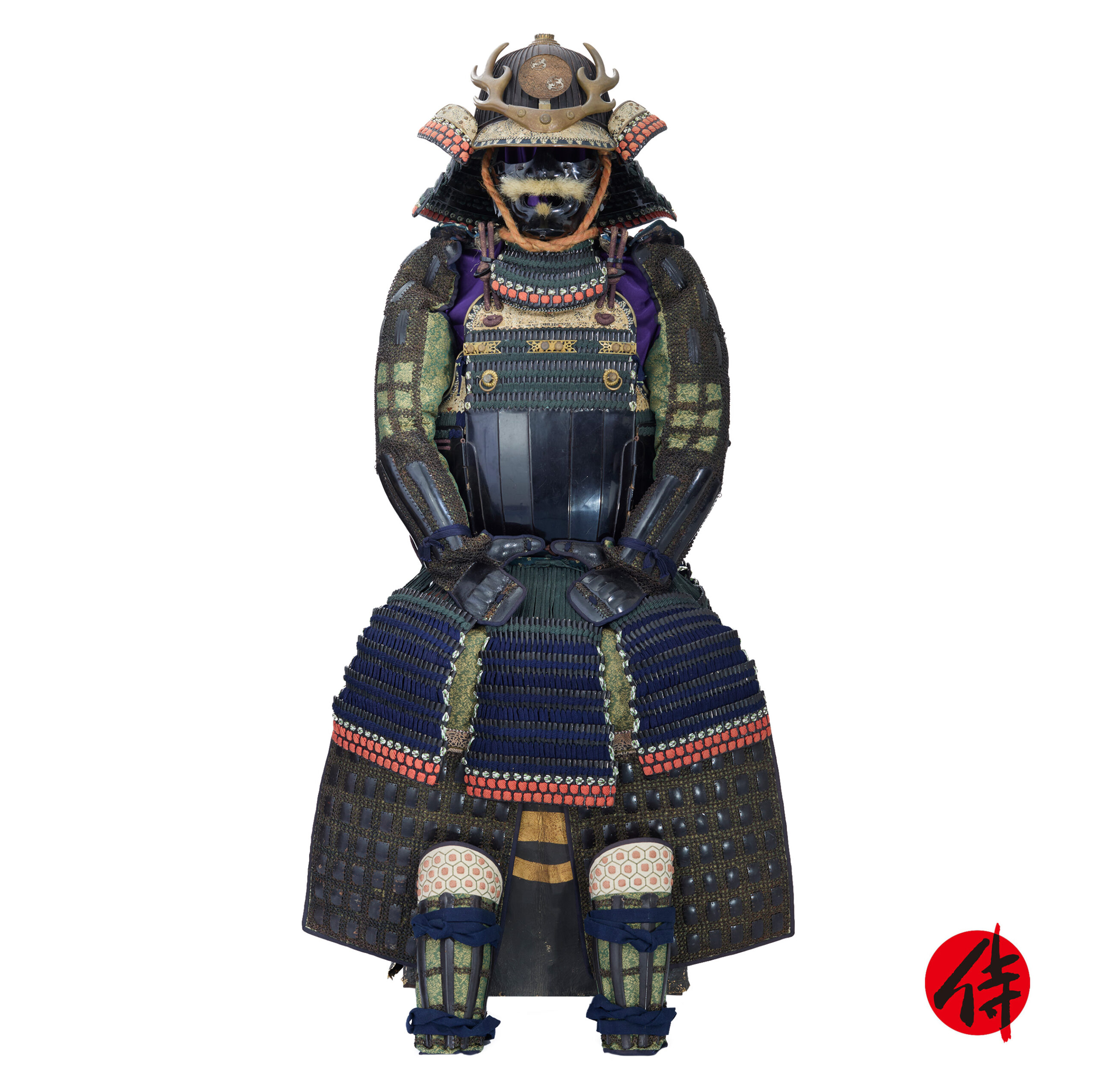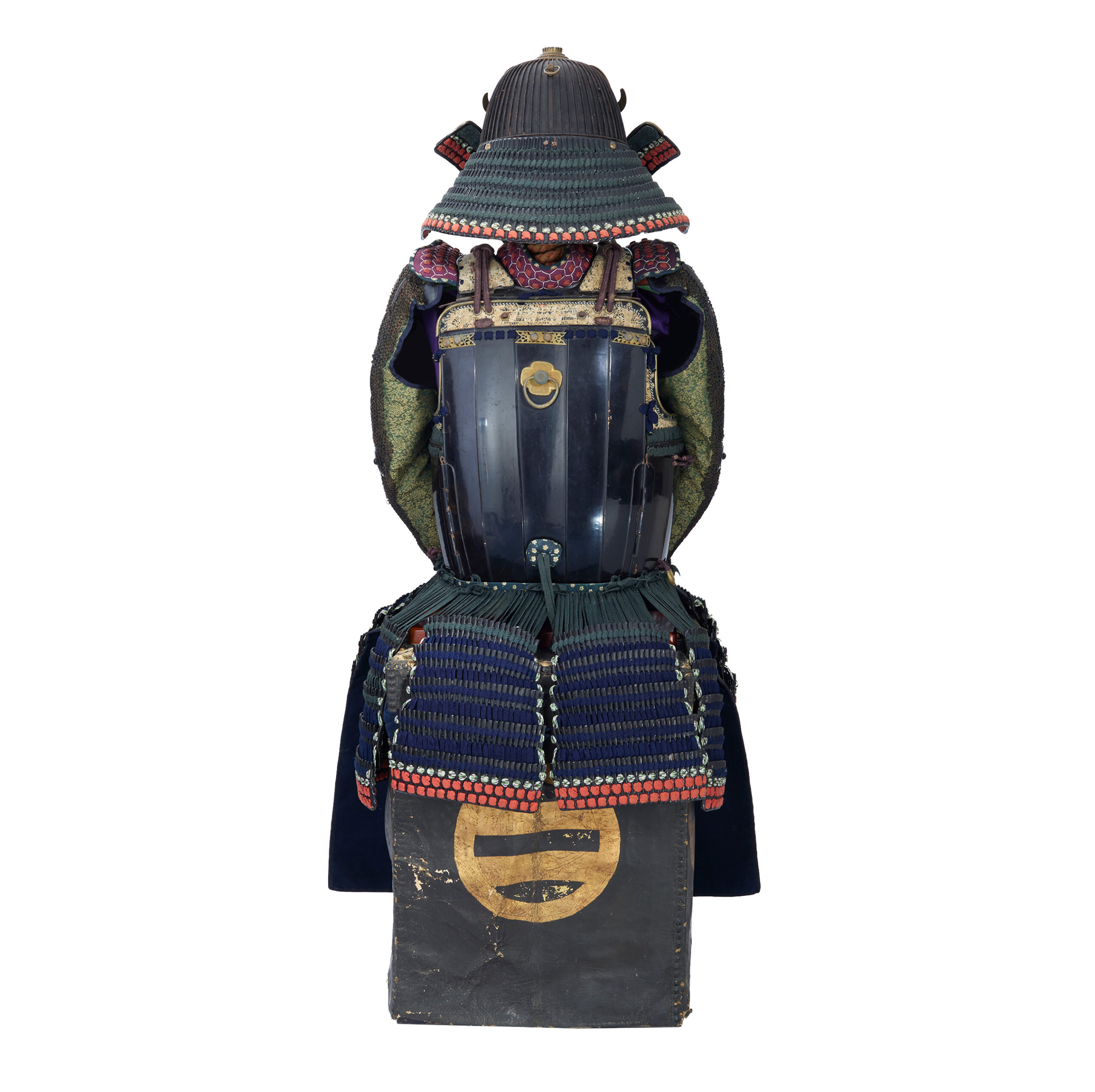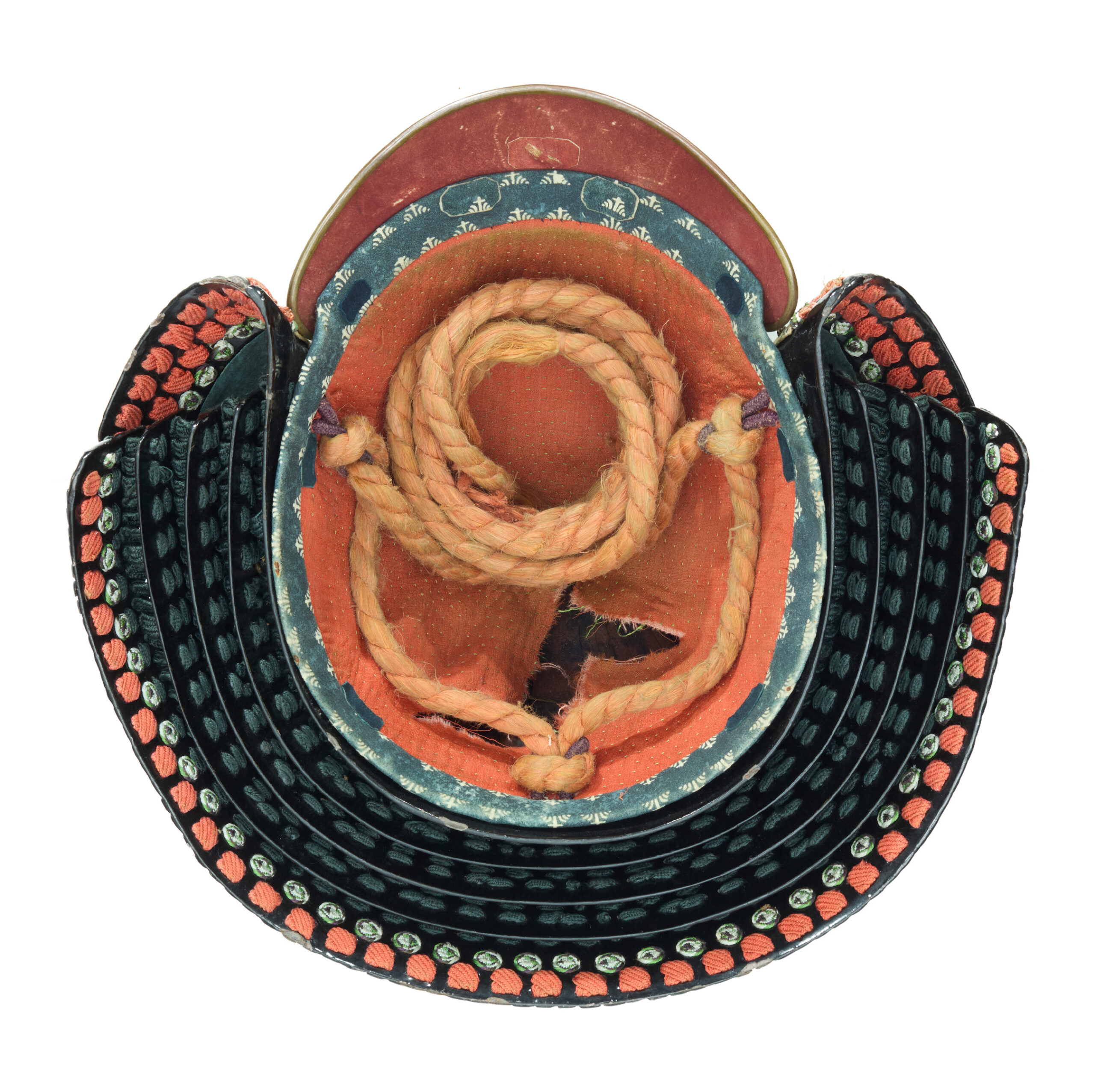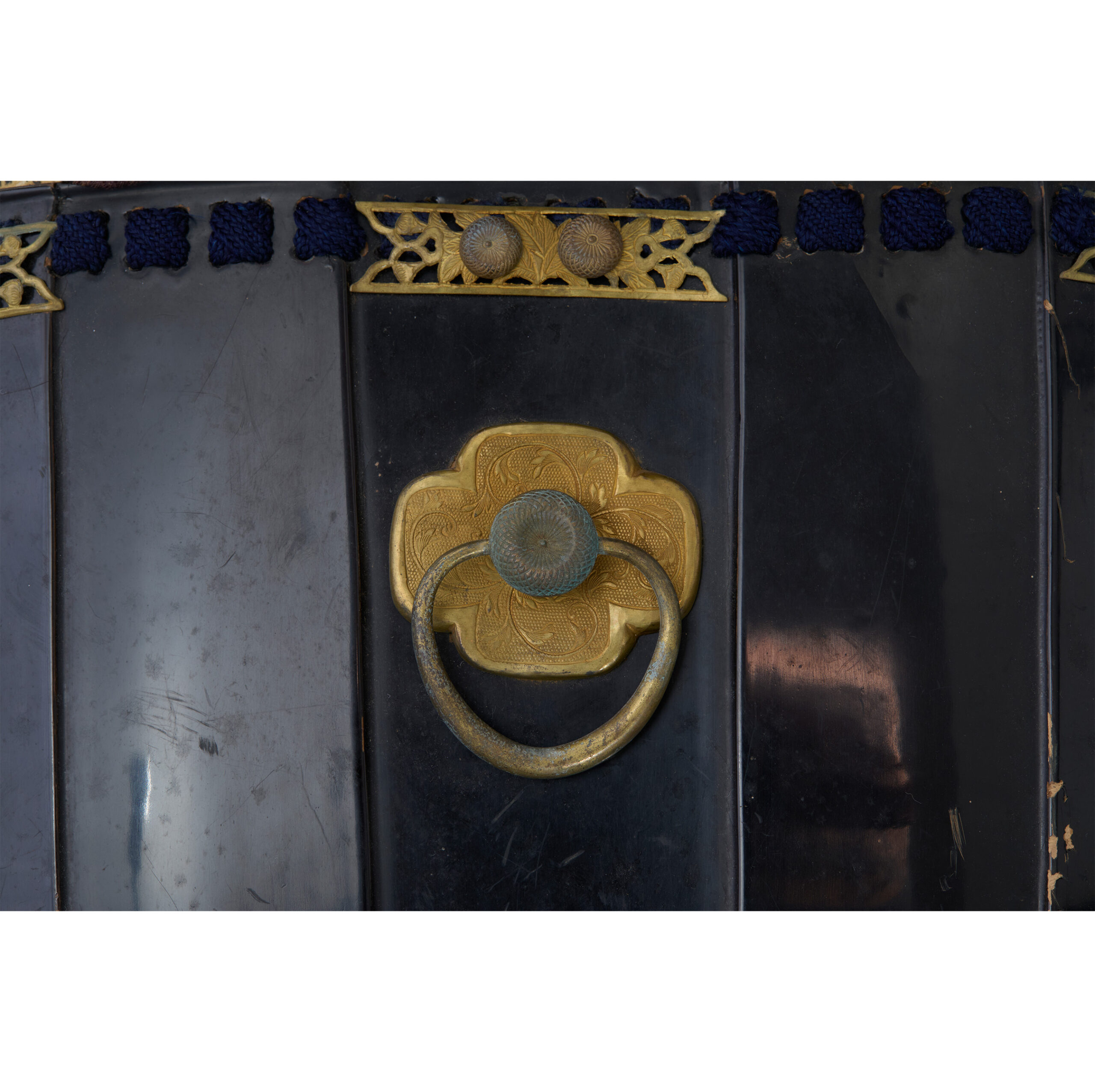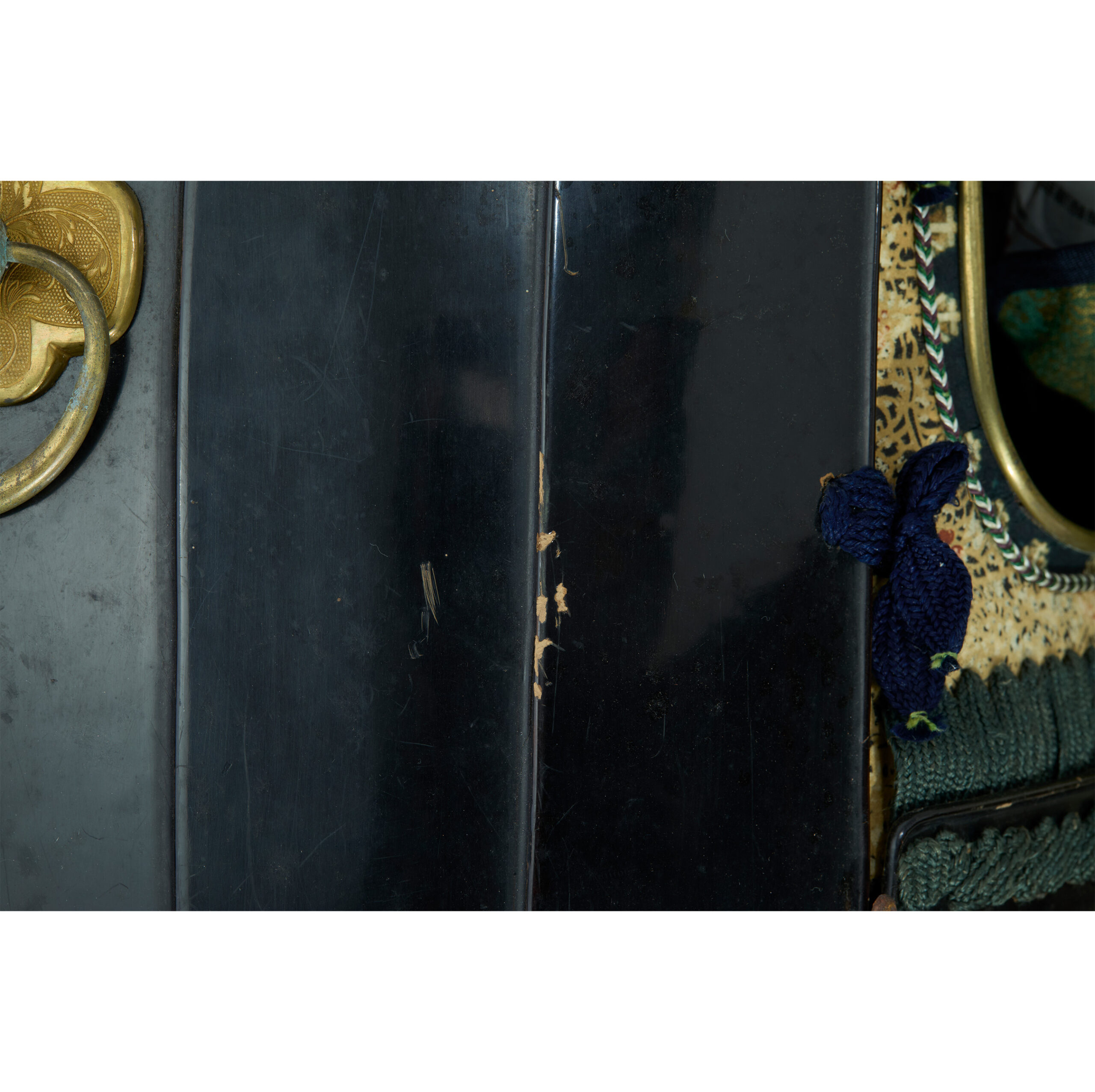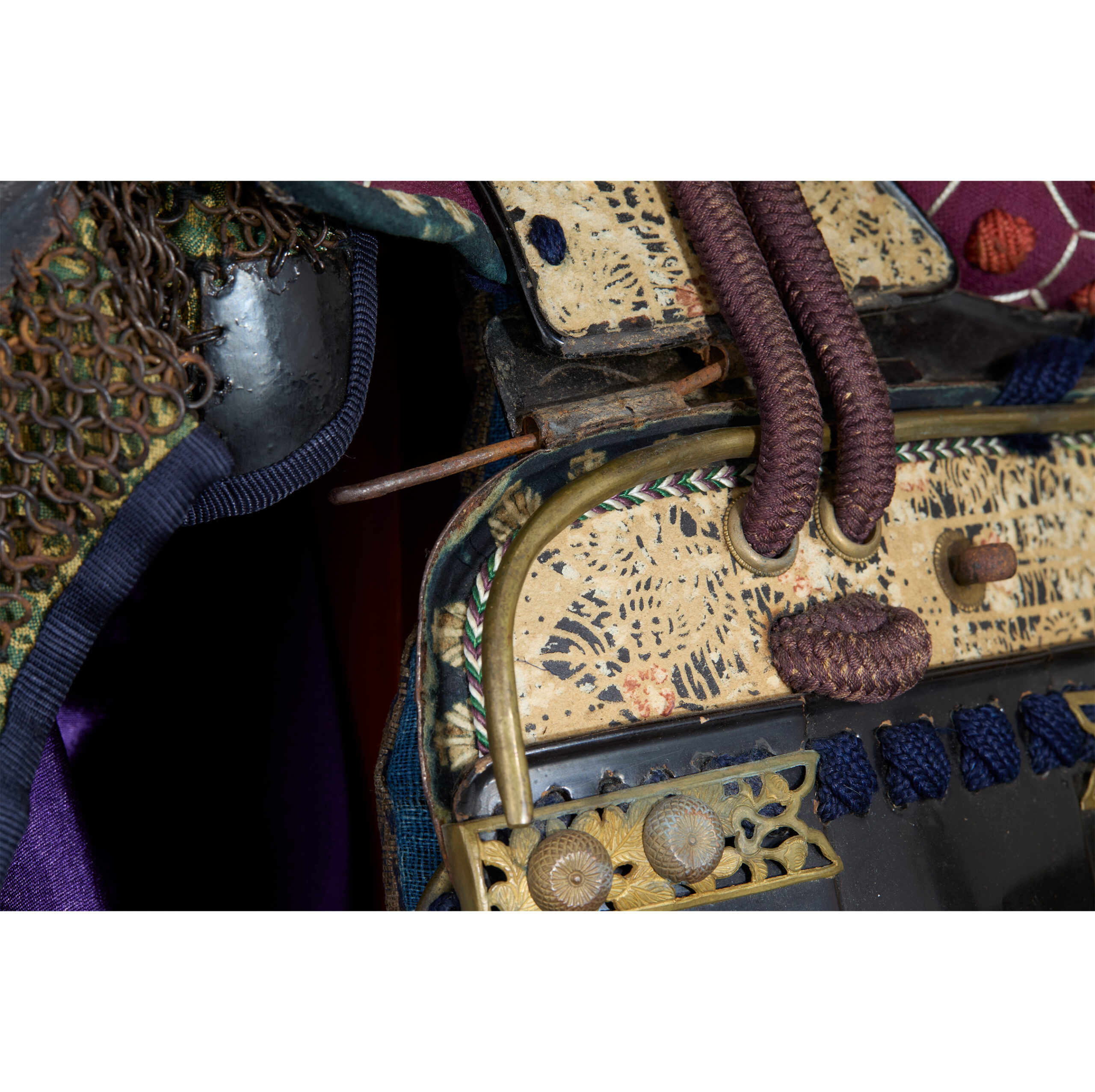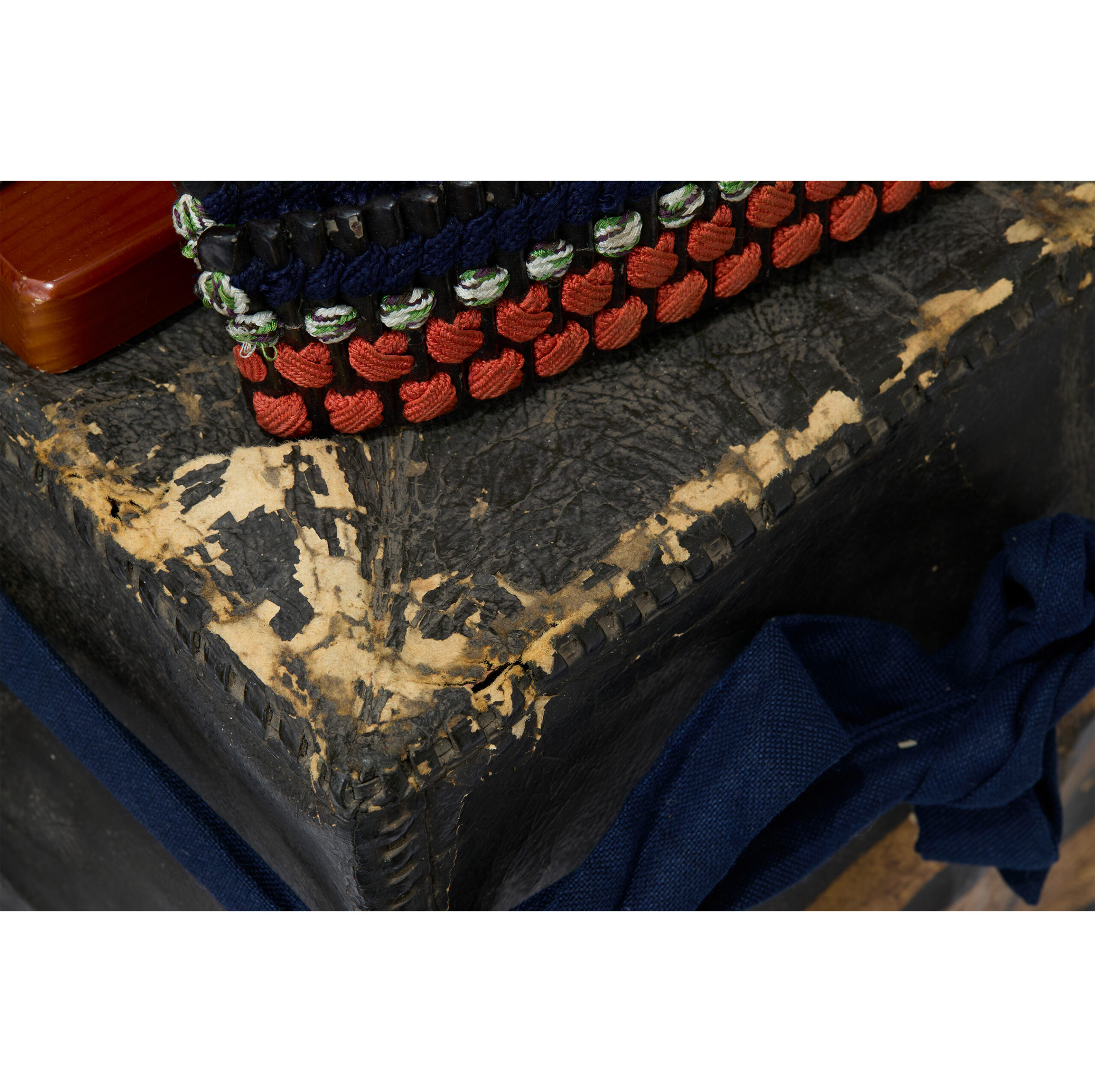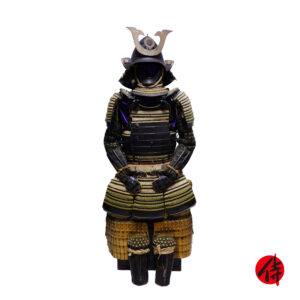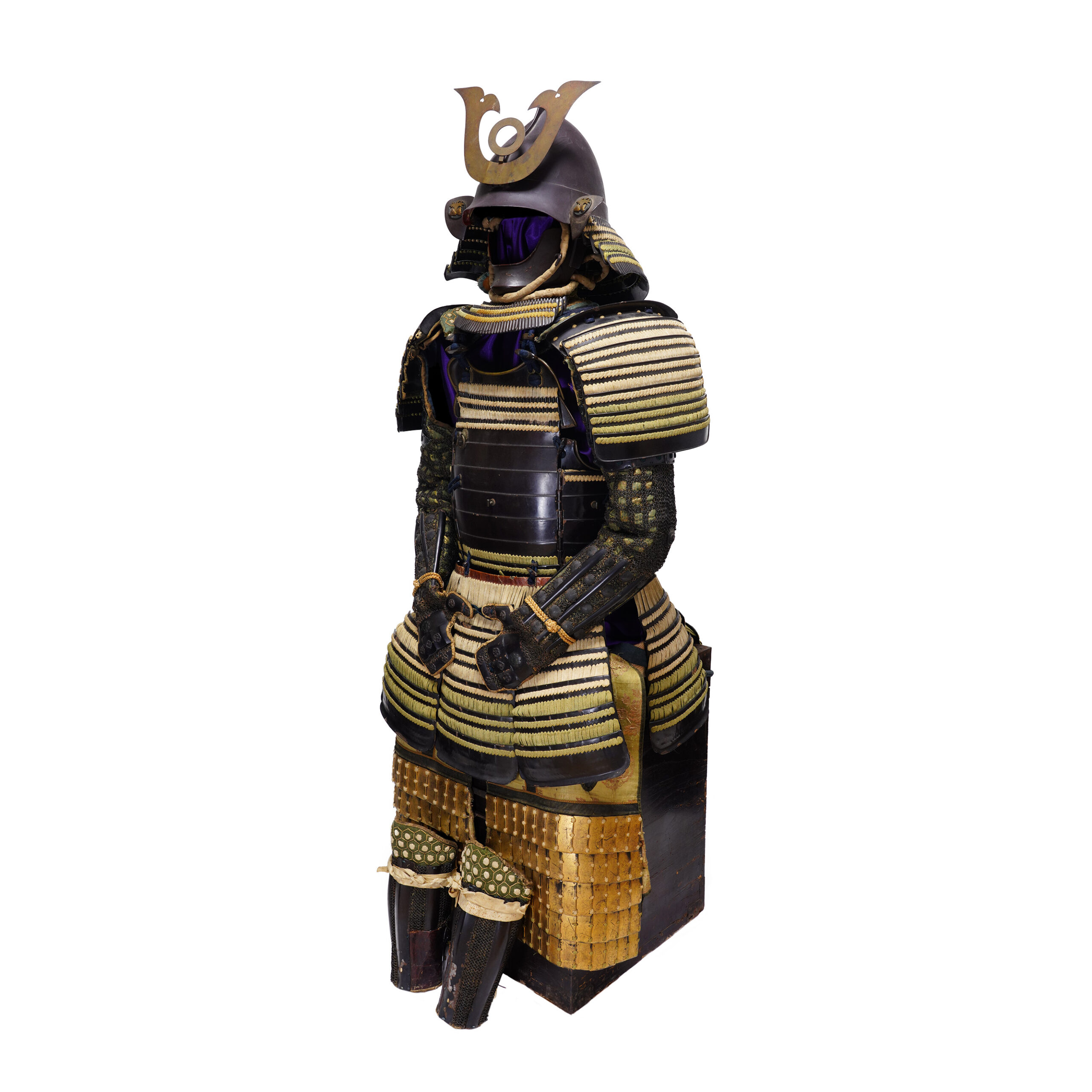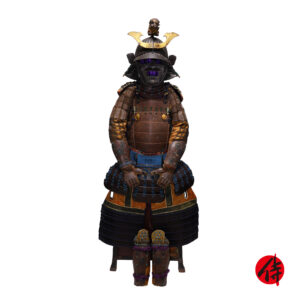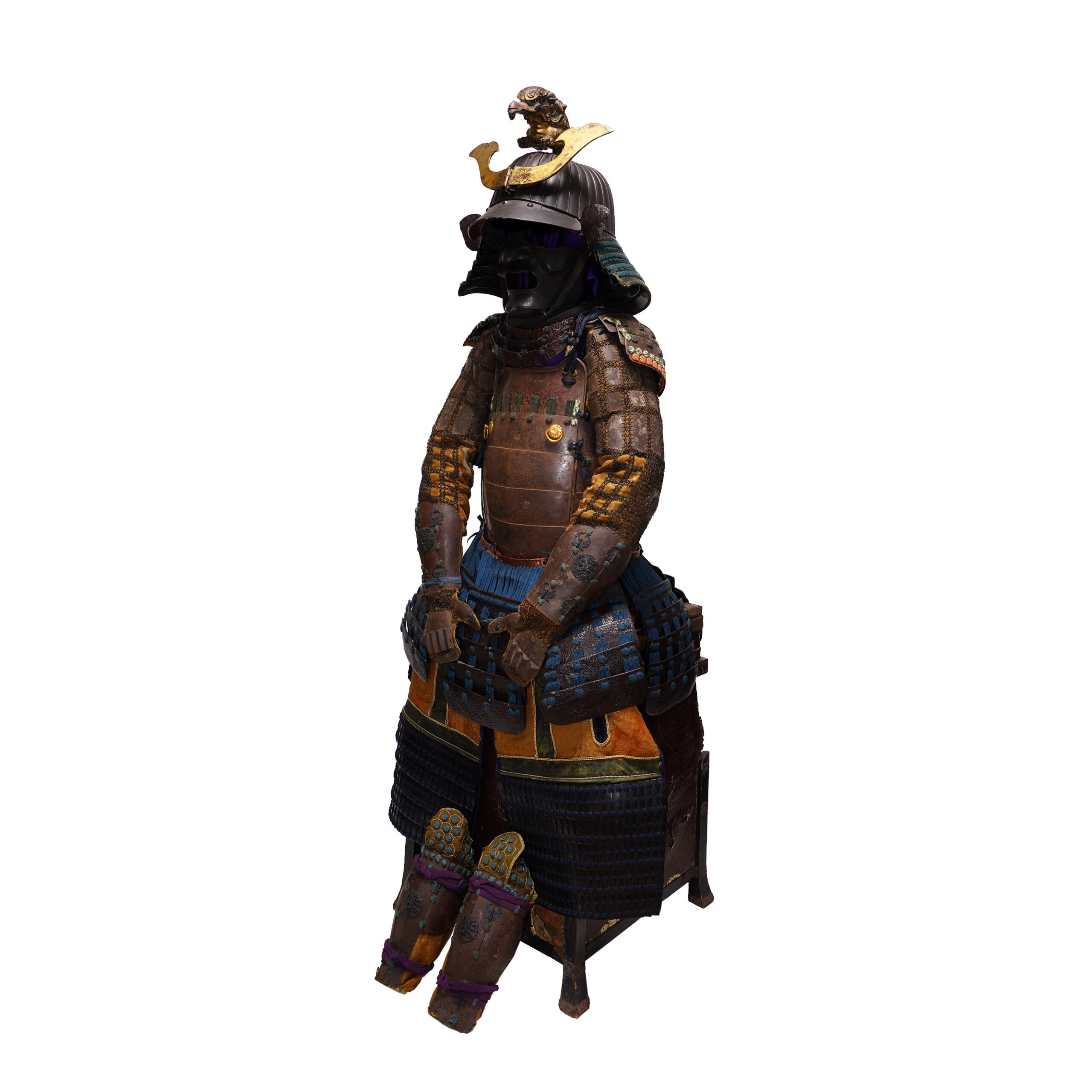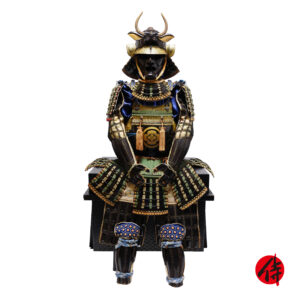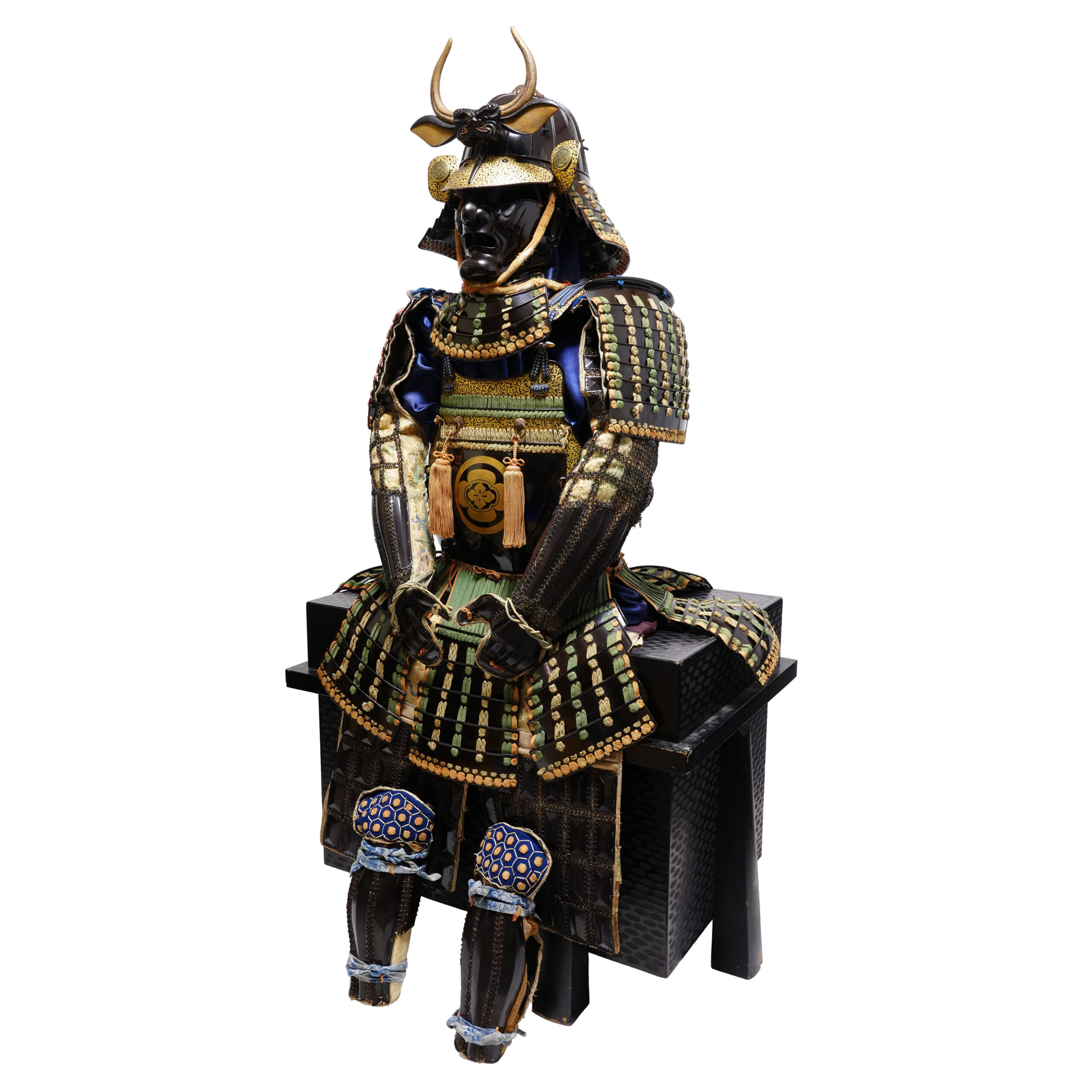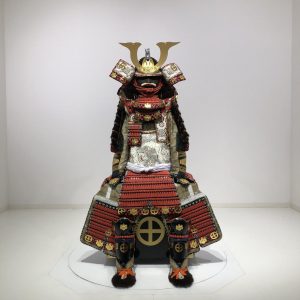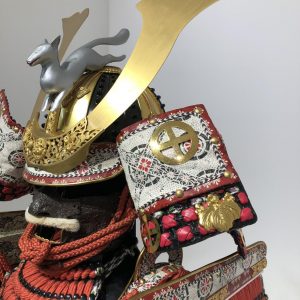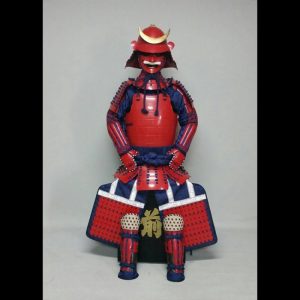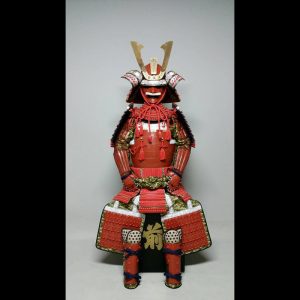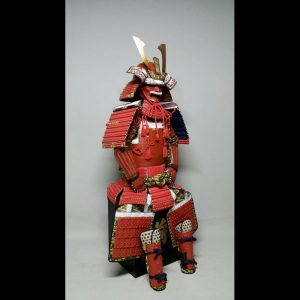Antique Mid Edo Period Samurai Armor with Tokubetsu Kicho Shiryo Certificate (A-43)
Period: Mid Edo Period (1688-1800)
appraised by The Association for the Research and Preservation of Japanese Helmets and Armor on September 14th 2025. We are expecting to receive its certificate in 2-3 months.

Kabuto (helmet)
■Helmet bowl: Suji Kabuto
The Kabuto (兜, helmet) is a protector for the head. When people started using the Kabuto, it was initially designed for practical use. However, the principal purpose of its design has changed with time; Samurai warriors tried to express their dignity, personality, or religion by wearing the characteristic designed Kabutos. According to a theory, these uniquely designed Kabutos were made from the late Muromachi (室町後期, 1467-1573) to the Edo period (江戸, 1603-1868). This type of Kabuto is categorized as the Kawari Kabuto (変わり兜), and a variety of materials were used to create them. For example, animal fur, seashells, plants, and paper were used as materials for decoration.
Here we would like to introduce to you a little bit more about the history of Kabutos. Before the Kawari Kabuto’s production, the Suji Kabuto (筋兜) appeared during the Nanbokuchou (南北朝, 1337-1392) period. At that time, the tactic was gradually changed from the horseback fight style to battle with the Katana sword and the Naginata (薙刀, Japanese halberd) on the ground. Therefore, there was a rise in demand for the weight-saving of the Kabuto. Also, in order to turn the attack by swords, a new type of structure was invented: the Suji Kabuto (筋兜). Its form slides swords’ attacks when weapons hit the Kabuto. It is said that the production of the Suji Kabuto prospered in the Muromachi (室町, 1336-1573) period. We estimate this Kabuto is one of these Suji Kabutos made in that tendency in the Edo period. It has 62 stripes in this Kabuto, meaning 62 small iron plates are connected. It is called Rokujyuni Ken Suji Kabuto (六十二間筋兜). Rokujyuni means 62 in Japanese.
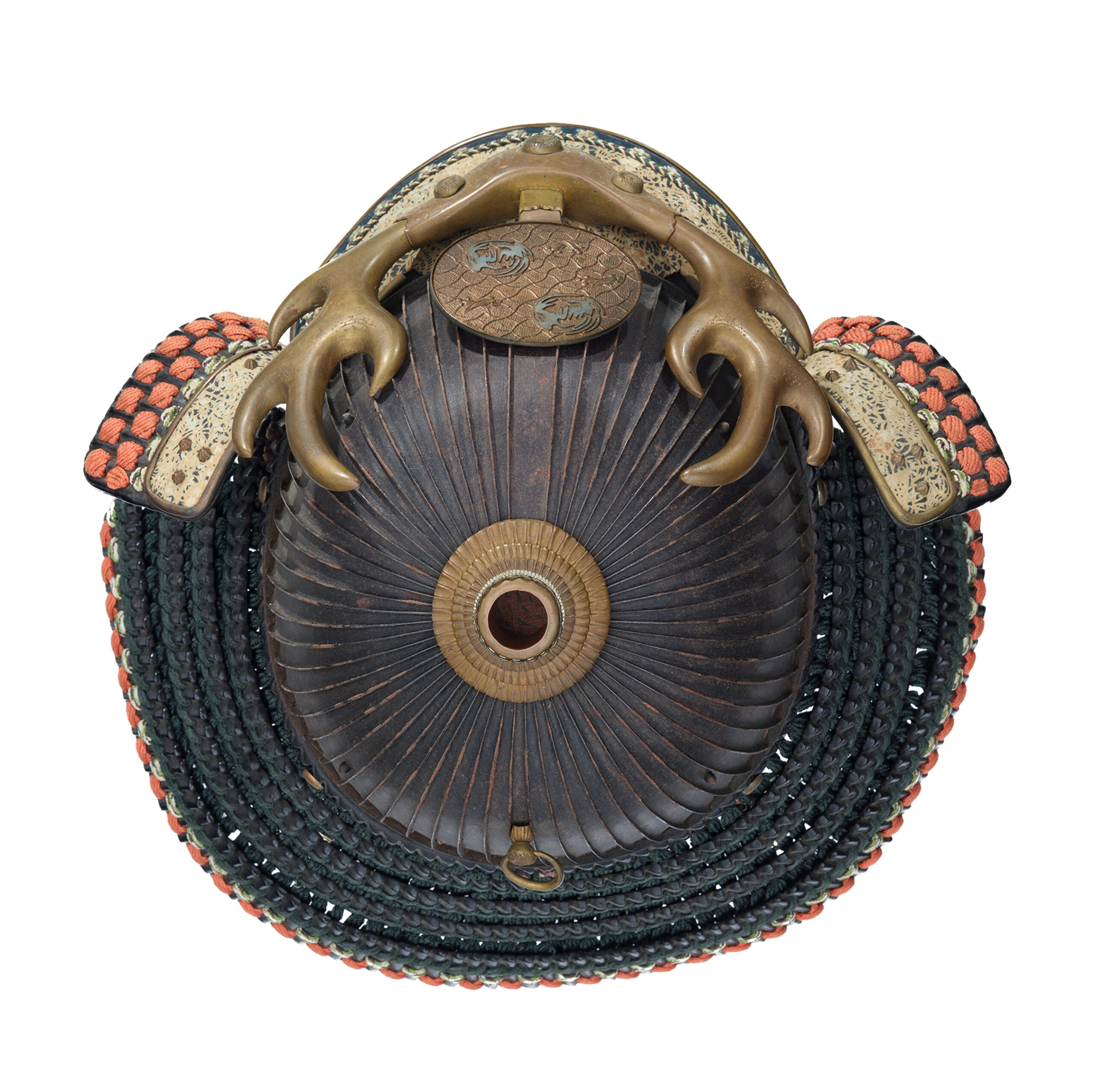
■Shikoro (side neck guard):
Black lacquered plates laced with green threads.

■Fukikaeshi (side neck guard)
The Fukikaeshi (吹き返し) is both ends of a Kabuto. It protects the face from swords.

■Menpo (face guard): Ressei Menpo
This type of Menpo is called the Ressei Menpo (烈勢面頬). It represents the angry face to intimidate enemies. There are many types of Menpo, depending on their shape or appearance. The purpose of Menpo was not only to protect Samurai’s face. But also to hide their true faces so that their psychological states were unaffected. Long beards are attached to this Menpo. Thanks to this effect, even a young soldier would have been able to produce the majestic appearance of a middle-aged Samurai.
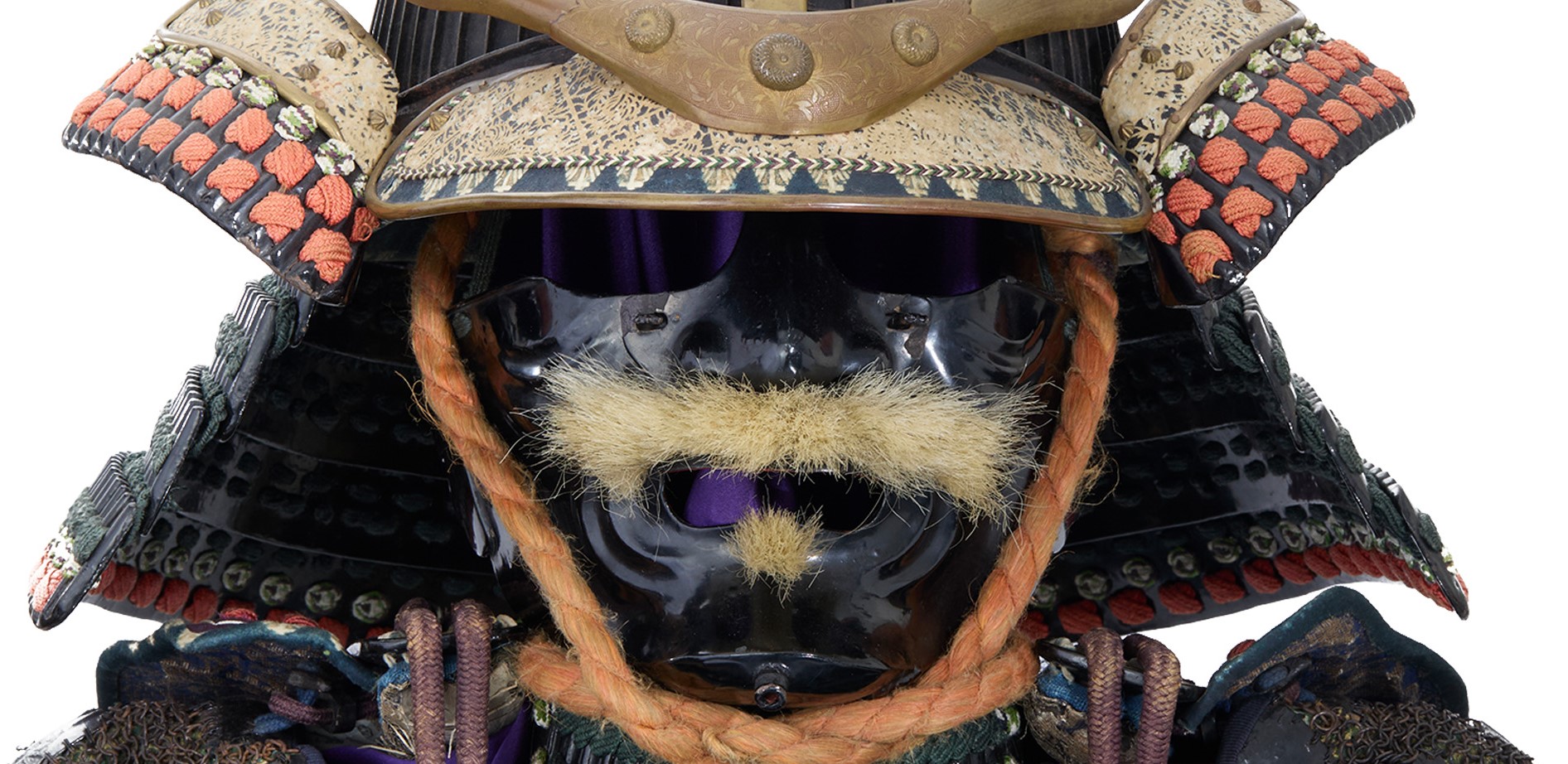
■Kuwagata (Front decoration):
The motif of this Maedatemono is a deer antlers. The motif of deer antlers has been used in Japanese armor and craftsmanship as a symbol of bravery, regeneration, and sacredness. Deer are known for their strong fighting spirit, and the antlers of a stag, in particular, have been regarded as symbols of battle. By incorporating deer antlers into the front crest of a helmet, samurai could express their courage on the battlefield. Additionally, since deer antlers regenerate and regrow every year, they have been associated with vitality and renewal, carrying wishes for long-lasting fortune and prosperity. Furthermore, deer have been considered sacred messengers of the gods, especially in places like Kasuga Taisha in Nara, where they are revered. By using deer antlers as a motif, warriors sought divine protection and blessings. For these reasons, helmets adorned with deer antlers were seen as auspicious and highly valued among samurai.
Also, if you look closely, you would find flowers and arabesque pattern. The flower seems to be a chrysanthemum (菊, Kiku). The chrysanthemum is one of the flowers that symbolizes fall, and people appreciated it very much since ancient times. It is said that this flower was used as a medicine for obtaining a long life in China a long time ago, and it was brought to Japan with this thought in the Nara period (648-781). As its petals form radially, the chrysanthemum has been likened to the sun. That is why this flower pattern is treated as the symbol of perpetual youth and longevity or good health. “Kiku no Gomon (菊の御紋)” is a kind of chrysanthemum pattern, and it has been used as the crest of the Emperor and the royal family in Japan so that it is well-known as a noble pattern.
Arabesque is a pattern in which stems and leaves of vines are twined and make curves. Since ivy has a strong vitality and grows up without interruption, people regarded this design as a symbol of prosperity and longevity. Vine is called Tsuru (蔓) in Japanese, and it has another pronunciation; “Man.” There is a word 万 (it is also read Man), which means ten thousand. In the Karakusa pattern, leaves and vines are connected like Obi (帯, belt). The word “帯” can also be read “Tai.” Due to its pronunciation, the term “代 (Tai)” is associated. From this word-association game, an idiom 万代 is associated, and it means a thousand generations. In other words, we could imagine that people used this design wishing prosperity and longevity for their clans for a long time.
We assume the center of the Maedate depicts Kari (wild goose), which looks like a family crest. The wild goose is a migratory bird that represents fall. Its pattern is also called “Karigane (雁金),” and some families used this motif for their family crests. The design that describes diagonally flying wild geese is named “Gankou Mon (雁行文).” This bird is engraved by not only a realistic figure but also a very simplified shape: Hiragana (ひらがな, a kind of Japanese letter) “he (へ)” shape that sometimes makes also wild goose.
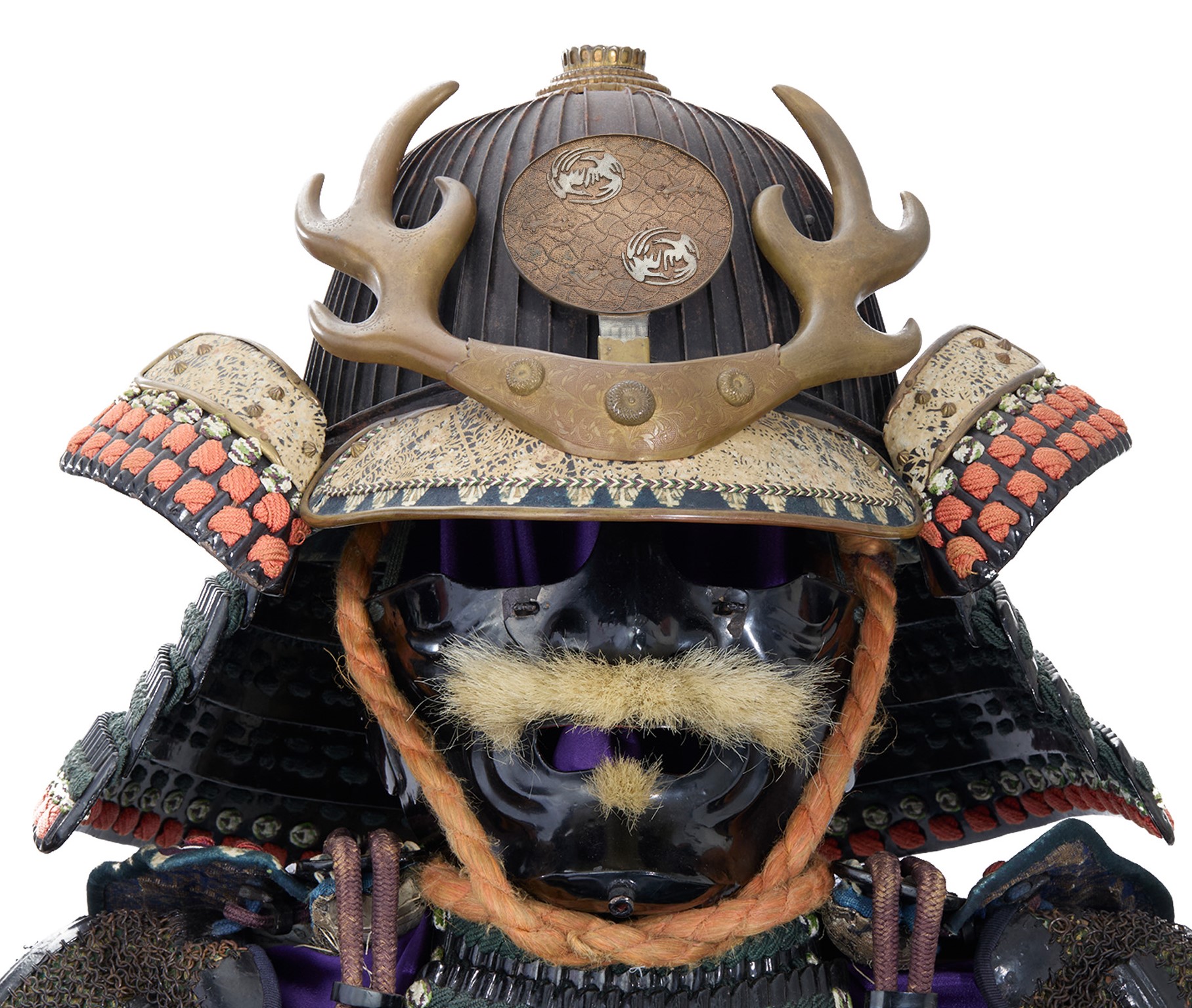
Armor
■Do (cuirass): Okegawa Nimai Do
Gomai Dō is a kind of cuirass for Tousei Gusoku (当世具足, developed armor style). Gomai Dō (五枚胴) was named after the fact that Gomai (五枚) means five plates and Dō (胴) means torso in Japanese. Instead of using a large number of small lamellar plates called Kozane (小札), this cuirass used large iron plates riveted.
If you look at the cuirass closely, you would find flower-shaped metal fittings. The motif seems to be a chrysanthemum (菊, Kiku). The chrysanthemum is one of the flowers that symbolizes fall, and people appreciate it very much since ancient times. It is said that this flower was used as a medicine for obtaining a long life in China a long time ago, and it was brought to Japan with this thought in the Nara period (648-781). As its petals form radially, the chrysanthemum has been likened to the sun. That is why this flower pattern is treated as the symbol of perpetual youth and longevity or good health. “Kiku no Gomon (菊の御紋)” is a kind of chrysanthemum pattern, and it has been used as the crest of the Emperor and the royal family in Japan so that it is well-known as a noble pattern.

■Kusazuri (skirt of plates attached to the cuirass):
Lacquered iron Kusazuri laced with navy. The cords for the Odoshi (縅, a technique for armor tying boards together with cords such as leather or thread) are relatively in good condition, so each plate is tied without coming off.

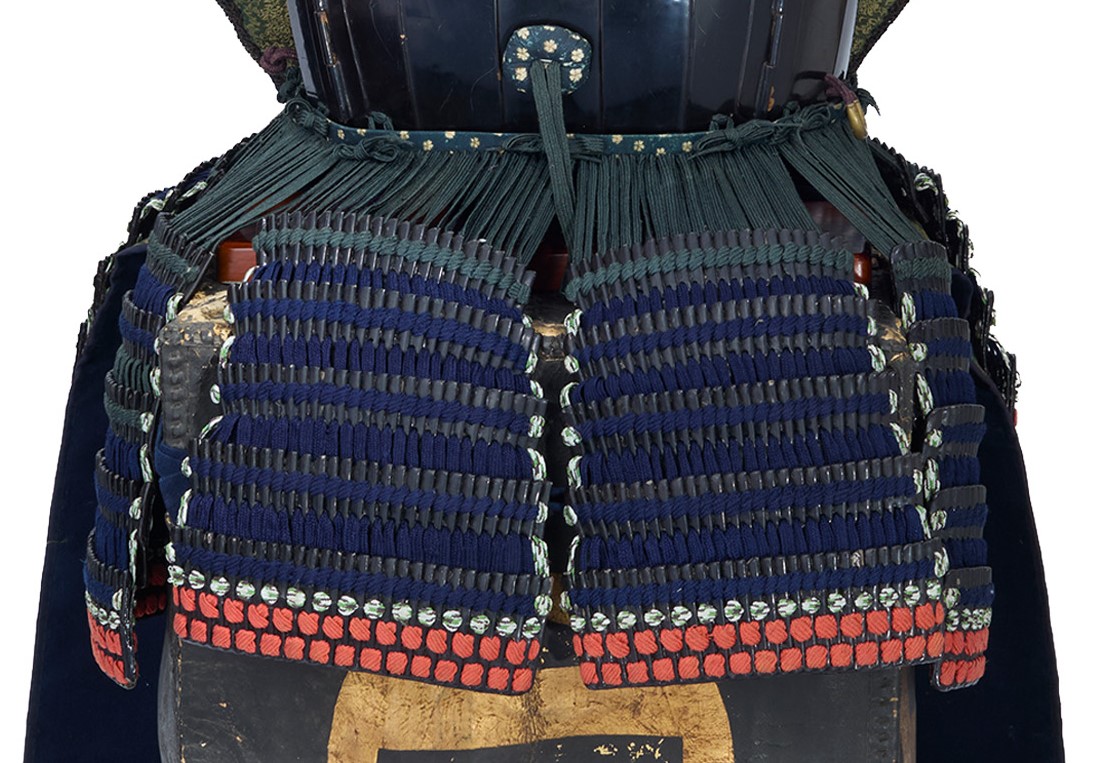
Small parts
■Kote (armored sleeves):
Intricate iron chain mail with silk.
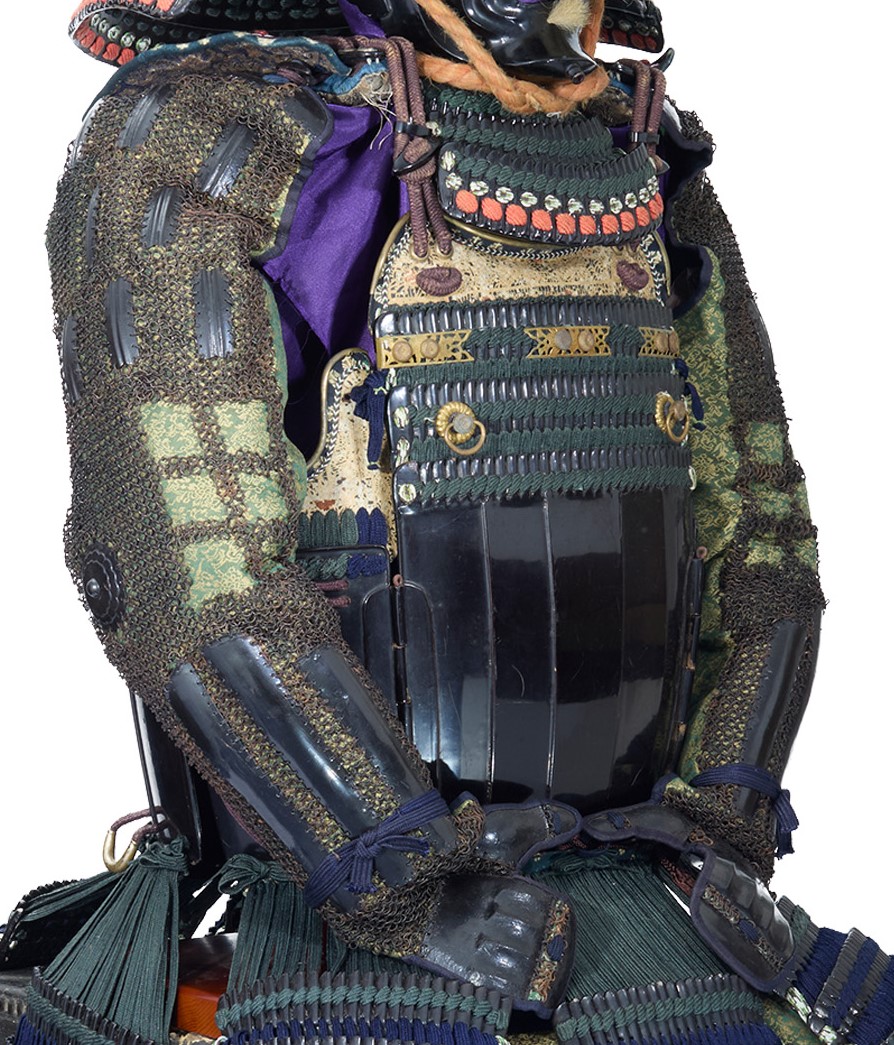

■Haidate (thigh protection):
The Haidate (佩楯) is a thigh guard. Chain mail and iron plates are attached to its cloth.
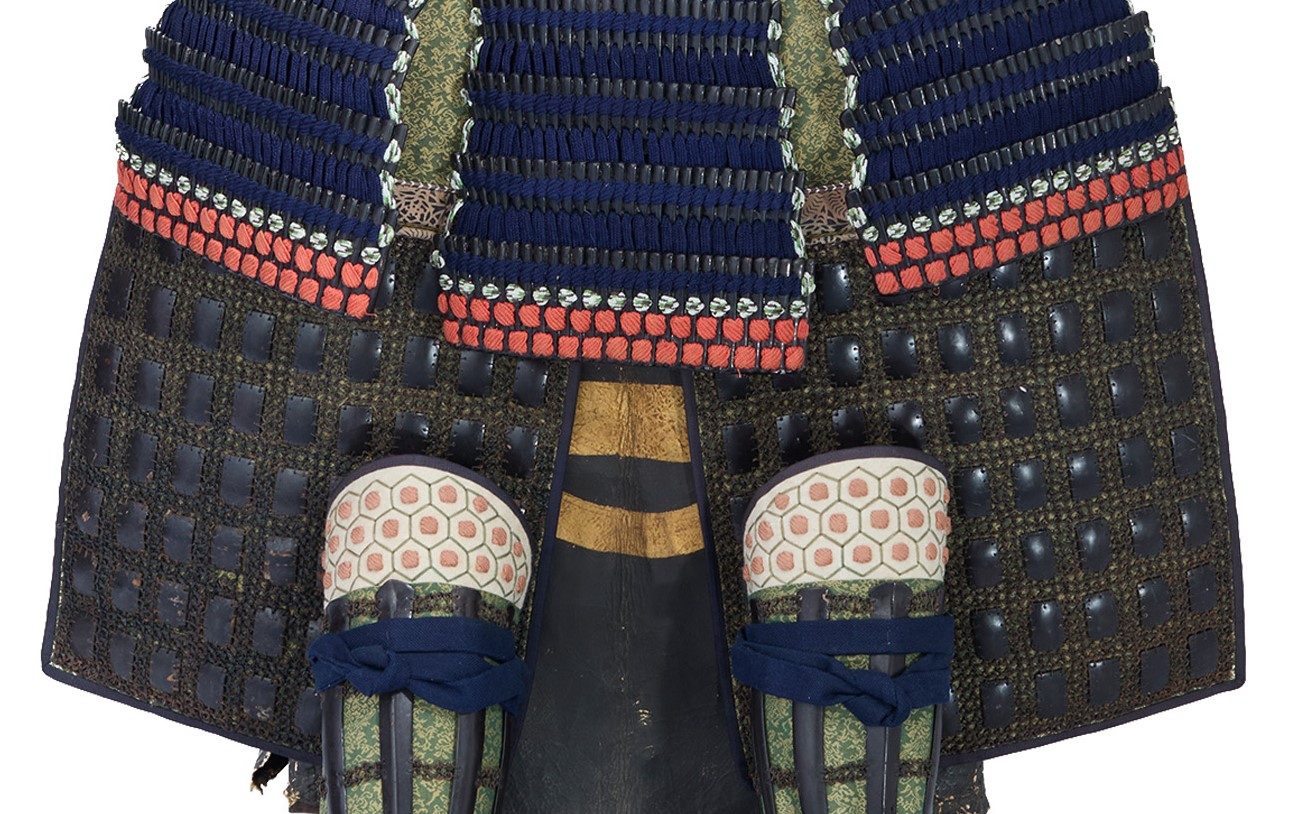

■Suneate (shin guard):
The Kikkou (亀甲, turtle’s shell) pattern is used for the cloth of the Suneate (脛当). It is a continuous geometric pattern connecting regular hexagons up and down. A theory says that this design was brought from China and the Korean Peninsula during the Asuka (飛鳥, 592-710) and Nara (奈良, 710-794) periods. A proverb says turtles live long lives; therefore, turtle and turtle shell patterns represent longevity. In addition, as this continuous hexagonal pattern does not get out of its shape, it is said people wished for eternal prosperity by using this design. This Suneate is a type called Kusari sunete (chain armor shin guard). It features chains attached to fabric, with minimal gaps between the metal links.
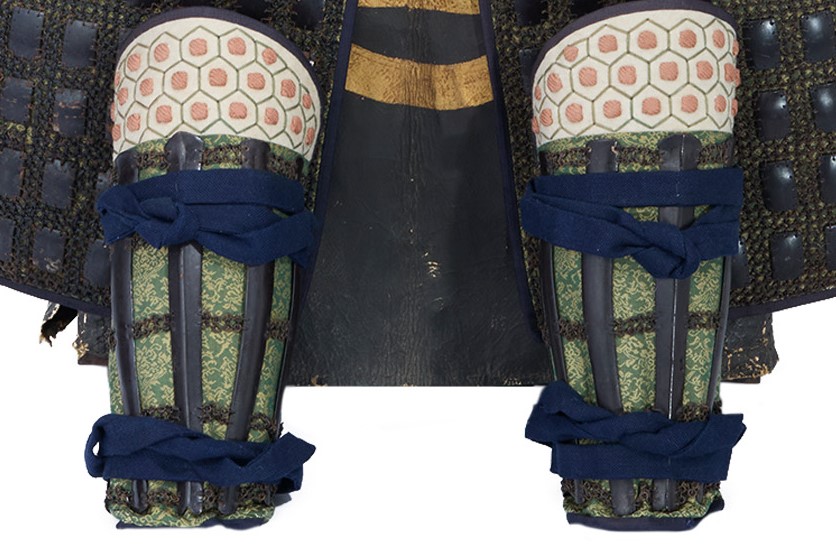
■Kacchu Hitsu (armor box)
On top of the normal wooden storage box, it comes with leather cover, which has a family crest. It is categorized as 二つ引両 (Futatsu Hikiryō), meaning “Two Horizontal Stripes within a Circle.”
This is a variation of the 引両紋 (Hikiryō-mon), a family crest featuring horizontal lines inside a circular border. The Hikiryō mon was widely used by samurai families, particularly during the Kamakura and Muromachi periods.

Certification: Tokubetsu Kicho Shiryo Certificate
On September 14th 2025, this armor was appraised as a Tokubetsu Kicho Shiryo by The Association for the Research and Preservation of Japanese Helmets and Armor, which is the most trusted Japanese armor appraiser in Japan. This association is also known as Nihon Katchu Bugu Kenkyu Hozonkai (日本甲冑武具研究保存会). Tokubestu Kicho Shiryo (特別貴重資料) means special rare article. It is ranked as the third highest of five rankings.
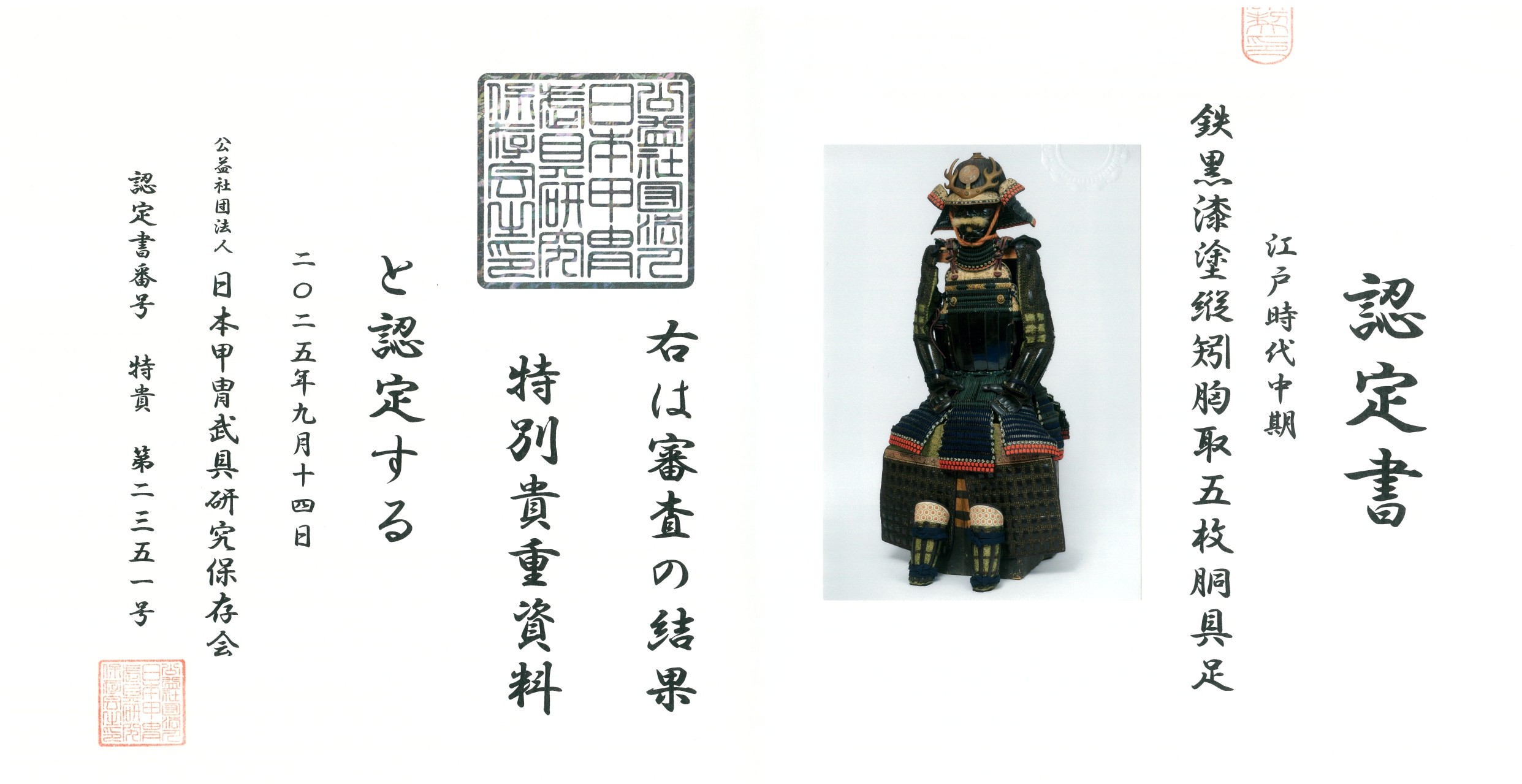
An English translation of the certificate is available on request. We won’t charge any additional fee.
【About us】
Samurai Museum is located in Tokyo, Japan, exhibiting antique artifacts related to the Samurai history. Samurai Museum Shop is the place for those who are interested in Japanese culture and craftsmanship. We deal with antique Samurai swords/armor, traditional crafts made in Japan and so on.
【Antique Japanese Armor and Export process】
After receiving the full payment from you, we will apply for its export permit from the agency for Cultural Affairs to legally export the antique Samurai armor to other countries. It normally takes around 2-4 weeks to receive this permit. And we would like you to expect at least 1-1.5 months for your order to arrive at your given address after you ordered.
【Payment method】
We accept payment through Stripe (Credit card), PayPal, Apple Pay or ChromePay, all of which are secure payment methods. Also, you don’t need to make an account on Stripe for the checkout. If you prefer other payment method, please contact us. You may either pay in JPY, USD, AUD, CAD, EUR, CHF or GBP. The price is set in Japanese Yen. Prices in other currencies are automatically calculated based on the latest exchange rate.

【Shipping duration】
We normally ship via EMS (Express Mail Service) provided by Japan Post. It usually takes at least 5-14 days to deliver the package after you place an order. We offer Free International Shipping as long as we can ship your order by EMS. If you prefer other shipping carriers, please contact us.
We will inform you of the order’s tracking number via email. Please make sure you fill out your valid email address correctly.

【How to make sure the condition】
Please keep in mind that what you are going to purchase is an antique item. We uploaded high resolution photos for you to check its condition thoroughly. If you like to see more photos with different angles, please feel free to contact us. We will be happy to send them to you so that you can make informed decision. It is essential for us to know that you are happy with your choice of a sword. and we are prepared to use the best of our ability to serve you.
【How To Contact Us】
Please contact us through email, Facebook Messenger or Live Chat if you have any questions. You can find each icon on the right side of the website. Please click one of them to reach us. We will reply to you within 1-2 business days.
【How To Preserve Antique Samurai Armor】
Dryness, humidity, and bad ventilation might deteriorate the condition of antique Samurai armor. The best temperature to preserve Samurai armor is around 20℃ in Celsius, and humidity should be about 60%. Direct sunlight should be avoided. We recommend storing armors in a room with good ventilation. If you like to display them outside the boxes for a prolonged time, we suggest using a glass case in order for dust not to be accumulated easily. In case you don’t use a glass case, please make sure to regularly dust off from the armor by using a soft brush made of delicate cloth or brush for painting.
If you like to know more about the preservation of this armor, please feel free to contact us.
